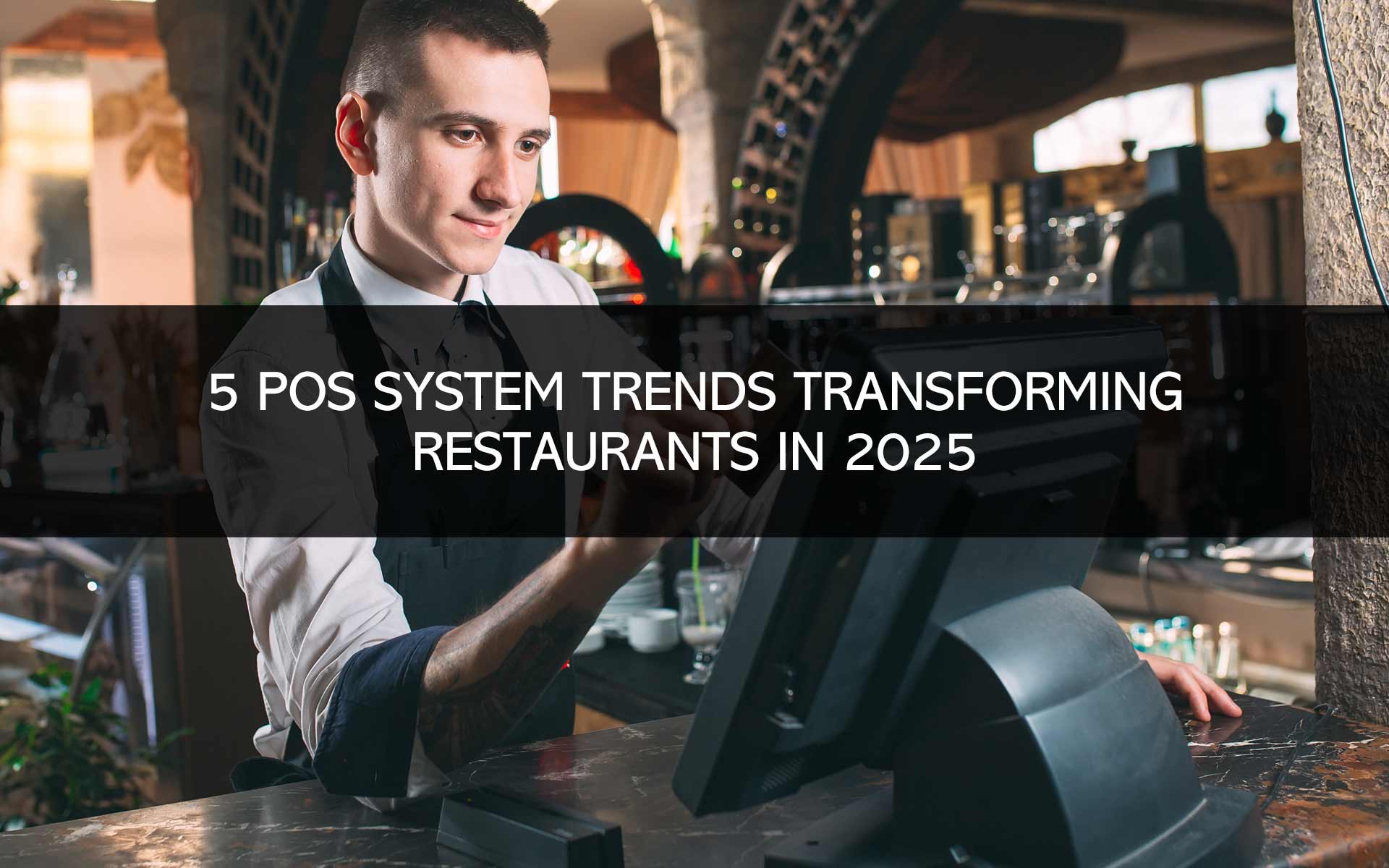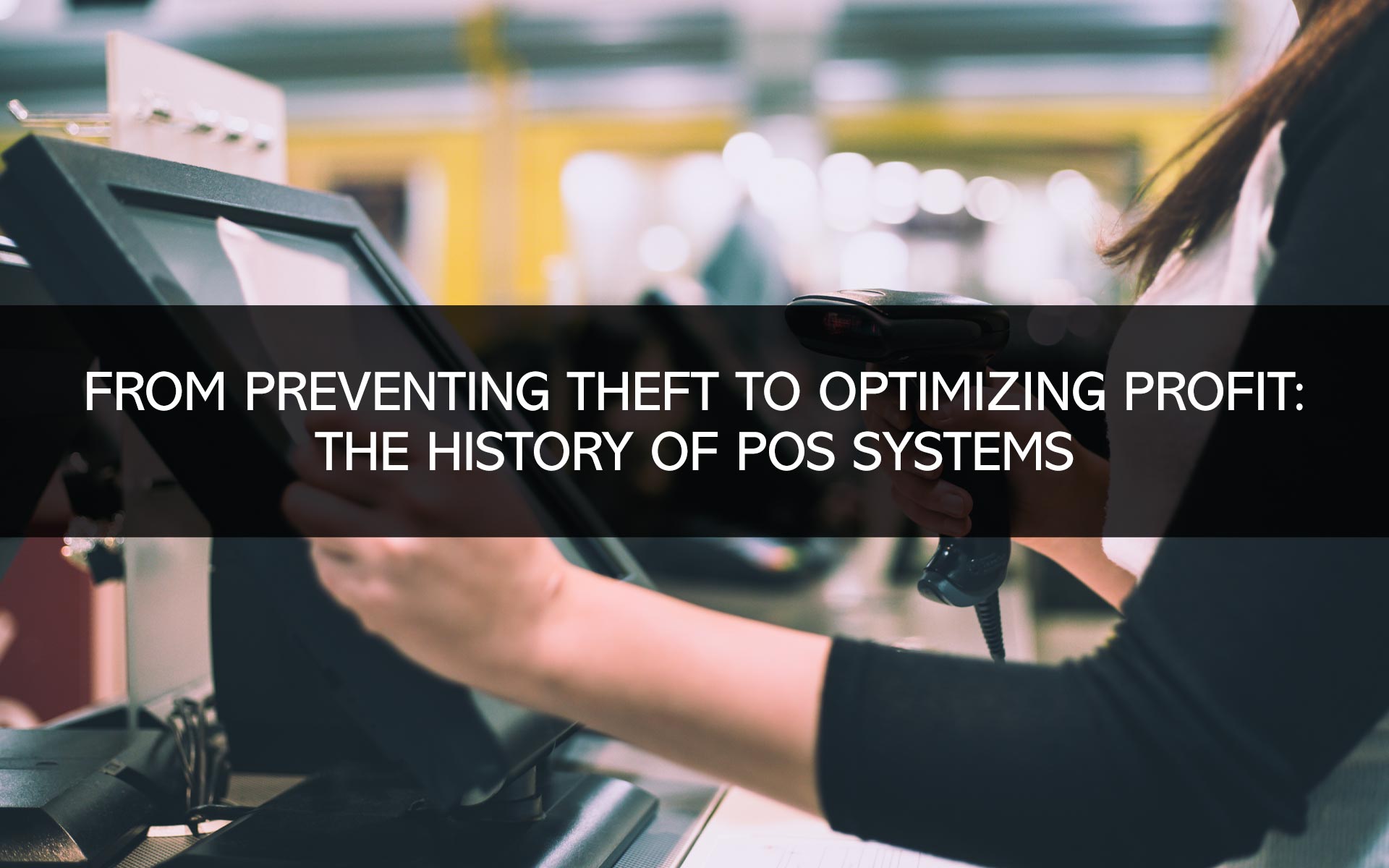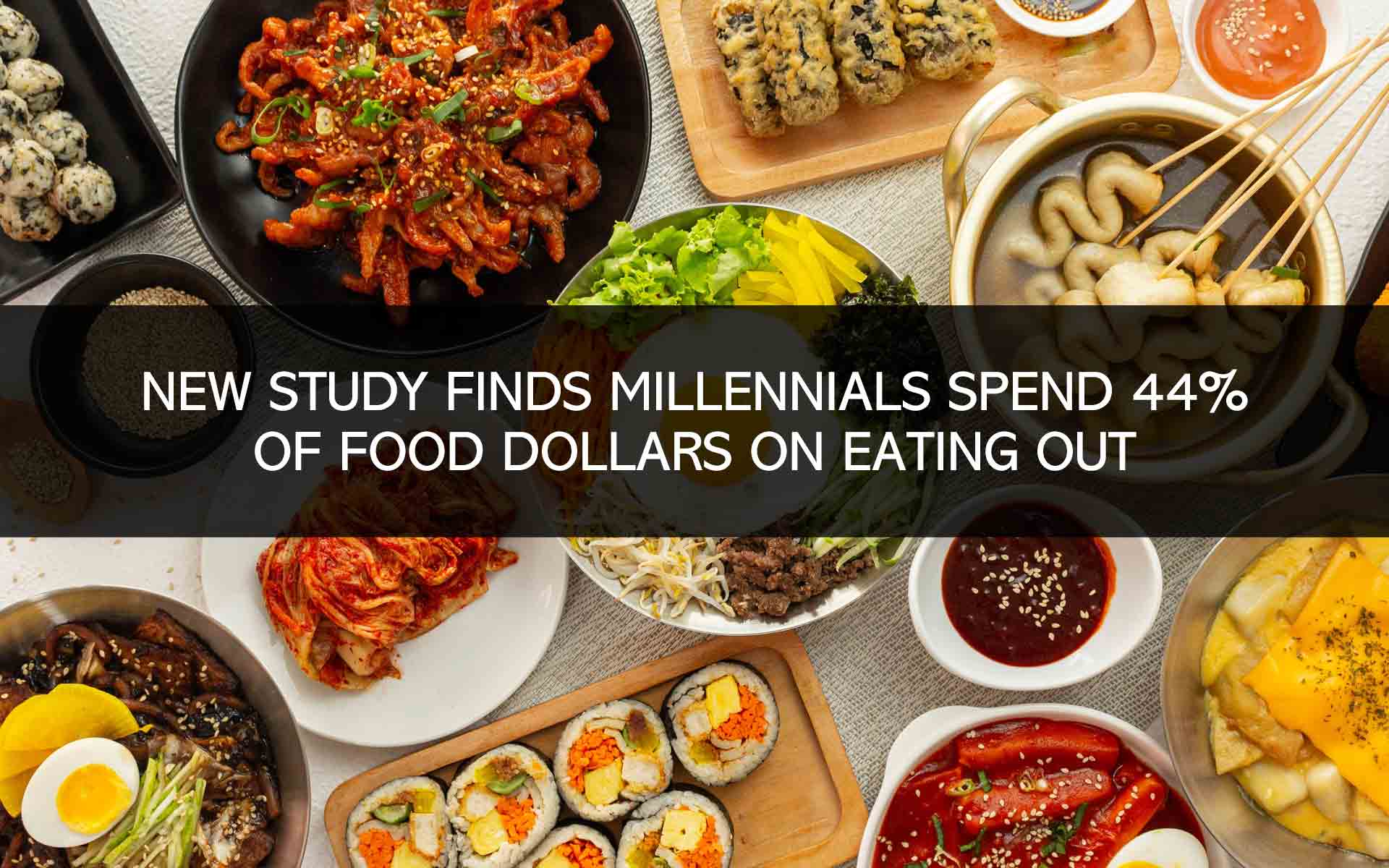5 POS System Trends Transforming Restaurants in 2025
It’s 2025, and you want your restaurant POS System to be efficient, consistent, and up-to-date. As technology and programming continue to evolve rapidly, customers are increasingly expecting more from their payment experiences.
For restaurants, this means that improved real-time visibility, cloud access, self-service, and contactless payments have become necessary, not just “nice to have.”
Restaurants, bars, cafes, and other hospitality environments will need to stay at the forefront of technology updates, such as mobile payments and AI integration. Customer experience is the most crucial piece, but behind-the-scenes benefits aren’t far behind within the latest trends.
An upgraded POS system can result in increased profits, reduced administrative costs, improved inventory management, and enhanced business intelligence.
Here are five trends we’ve seen in POS systems so far in 2025.
Trend 1: Cloud-Based POS Dominance
Cloud-based POS software and systems have surged into the market over the past five years, growing from a $12.2 billion market in 2018 to a projected $42.5 billion by 2027.
You’ve probably heard of the most popular: Square, Toast, and Shopify. With POS systems being the most popular technology in restaurant back-office operations, it’s easy to see why a more functional, easy-to-use system with a reasonable price tag is an important factor.
Cloud-based POS systems give businesses access to real-time data, operations management, and reporting from anywhere they can access the internet. This is highly beneficial for multi-locations and more mobile payment systems.
The advantage is visibility. Franchises, mobile businesses, and pop-up stores can take advantage of the full spectrum of sales data for proper inventory while keeping pricing consistent.
Managers can see sales, edit menus, and review reports on the fly. As the restaurant industry continues to evolve with changes in market prices and customer needs, cloud-based POS systems can match that speed and keep your business thriving.
Another key benefit is scalability. Your small business may not need certain features at the start, but as your sales grow, so should your POS. Cloud-based POS systems accommodate any size of inventory while still allowing for the customization you need to make your business work for you.
Trend 2: Integration of AI Analytics
AI is everywhere for a reason. The integration of AI or machine learning into POS systems might be one of the most transformative trends we are seeing to date. AI in the Food and Beverage Market is expected to reach $67.7 billion by 2030. But what does that mean for your restaurant?
Integration of AI assists in analyzing huge swaths of data. You can predict customer behavior and preferences, optimizing menus, and determining inventory demand. This previously untapped data can now provide you with real, actionable insights for your restaurant. You can start making data-driven decisions with real metrics to back up your business.
For example, the integration of AI programs for predictive analysis can help you determine peak times to avoid being short-staffed. It can also alert your business to food recalls or contamination to comply with increasing safety requirements. Inventory analytics help you order smarter and cut potential food waste, along with saving you money.
Food and beverage costs are fluctuating rapidly. Optimize menu pricing and improve service speed by leaning into AI and machine learning software integrated into your POS system. AI integration can help your restaurant not only run more smoothly, but also more effectively.
Trend 3: Mobile and Contactless Payments
The days of dollar bills changing hands are in the past. As more customers lean on tap-to-pay and other contactless forms of payment, your restaurant will need to keep up. Convenience is an expectation nowadays. Mobile ordering and payments are now the norm, offering seamless experiences for customers as well as staff.
From at-table ordering to mobile payment processing, service is speeding up, and so are the expectations from customers. Mobile systems allow both the customer and the staff to ensure their orders are correct and that payments are processed quickly.
By 2026, RBR Global suggests that more than 81% of consumer credit cards will feature contactless payment technology. Even more growth is expected for cardless payments, such as Apple Pay and other mobile wallets. 94% of smartphones are NFC-enabled for mobile wallet payments. Even more eye-opening is that contactless payment accounts for 50% of transactions globally.
76% of restaurants reported adding mobile pay to their capabilities in 2022, and 66% adopted tap-to-pay options. As digital wallets continue to rise in popularity with consumers, restaurants will need to adopt or be left behind.
An upgraded POS system will be able to handle high volumes of contactless and mobile payments. This caters to customer preference while also streamlining the payment process for your staff. Transactions will be faster and more secure, meaning more business and happier diners.
Trend 4: Self-service Kiosks & Tableside Ordering
Cloud-based systems, AI integration, and contactless payment capabilities are launching restaurants toward more customer-focused operations.
We’ve seen tableside ordering and self-service kiosks gaining widespread popularity in 2025. These POS experiences are placing service directly into the hands of your customers while simultaneously streamlining restaurant operations.
An enormous 66% of US consumers prefer self-service kiosks over staffed checkouts. We’re seeing a new standard for convenience and a huge shift in consumer behavior. This trend is largely impacted by the COVID-19 pandemic and labor shortages across the customer service and hospitality industries.
Generational divides are still noticeable for these types of systems, so investigate your customer demographic to understand if kiosks and self-service are a good fit for your business. 84% of Gen Z and 76% of Millennials reported preferring self-service kiosks, while only around half of both Baby Boomers and Gen Xers prefer that option.
While contactless payments have taken over in many areas, some American consumers are less eager to adopt. QR codes, especially QR payments, were especially divisive when discussed for a dining-in payment option. One report saw a response of 0% of Americans surveyed would want to pay via QR code when dining in. Traditional credit card payment, including tap-to-pay, seems more secure for diners over a QR code.
Adopting a POS system that can handle mobile and contactless payments is essential, with customer preferences leaning toward tableside payments.
Trend 5: Enhanced Security Features
With less hard cash changing hands, enhanced security features will be more important than ever. Prioritizing the security of your POS and connected systems will not only keep your restaurant operations in compliance but also give your customers peace of mind.
- End-to-end encryption
- Payment tokenization
- PCI DSS compliance
POS Encryption ensures that payment data cannot be read by unauthorized parties by converting that data into a secure, encoded format. This can prevent skimming, data interception, and other attacks that lead to security breaches or fraud. This includes end-to-end encryption, point-to-point encryption, and tokenization.
Payment tokenization is a security technique that replaces sensitive payment information with a unique but random set of characters called a token. This keeps payment data safe during transactions by not storing the real card data. Tokenization allows for a more secure and seamless payment experience for customers with reduced risk of data breaches and fraud.
POS encryption is highly effective, but some vulnerabilities can weaken its effectiveness. Outdated software and hardware, system hacking or malware, tampering, and weak internal security are the main vulnerabilities to look out for. A properly updated POS system can keep your customer and your business data secure.
Most importantly, ensure that your POS system is meeting industry standards and regulations, such as Payment Card Industry Data Security Standards (PCI DSS). Compliance is not a one-time task, but requires consistent processes to ensure secure payments from both behind the scenes and at the customer transaction.
Upgraded POS Systems Enhance Customer Experience
Technology seems to be advancing faster than ever, and consumer preference is not far behind. It may seem like a monumental feat to upgrade and meet the expectations of restaurant-goers.
AI integration, mobile payments, and cloud-based systems can bring huge benefits to your restaurant. These tools streamline processes, improve service, and help you adjust to customer preferences. However, you don’t have to implement these alone.
Superior Business Systems is ready and waiting to ensure your business is keeping up with the latest trends so that you can bring them to your customers. From secure, mobile payments to data analytics at your fingertips, we’re ready to ensure your POS system is working efficiently for you.



